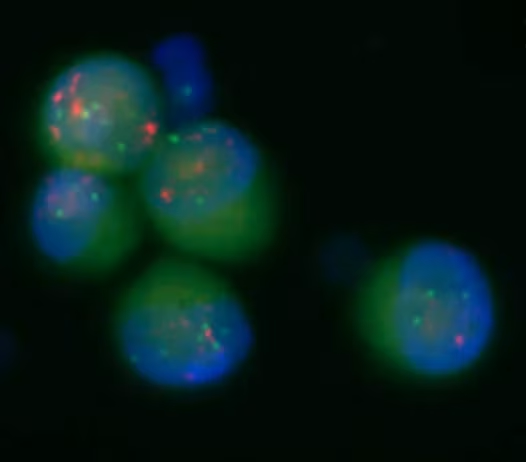
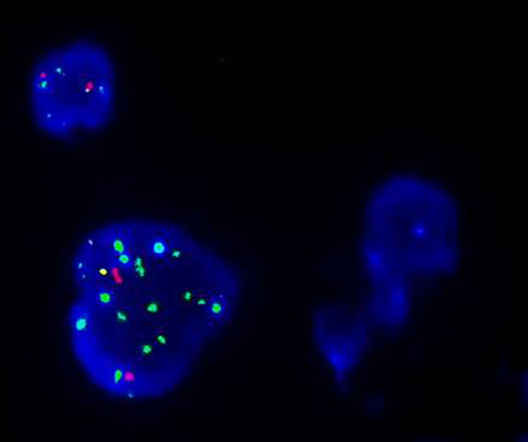
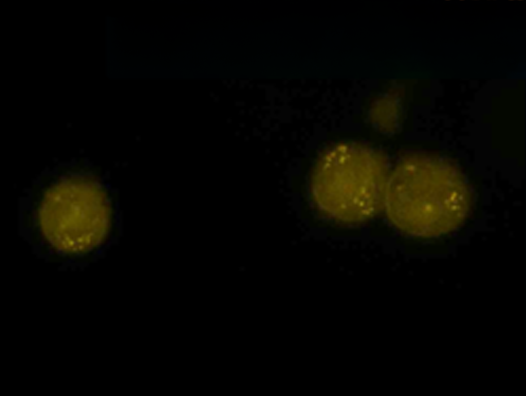
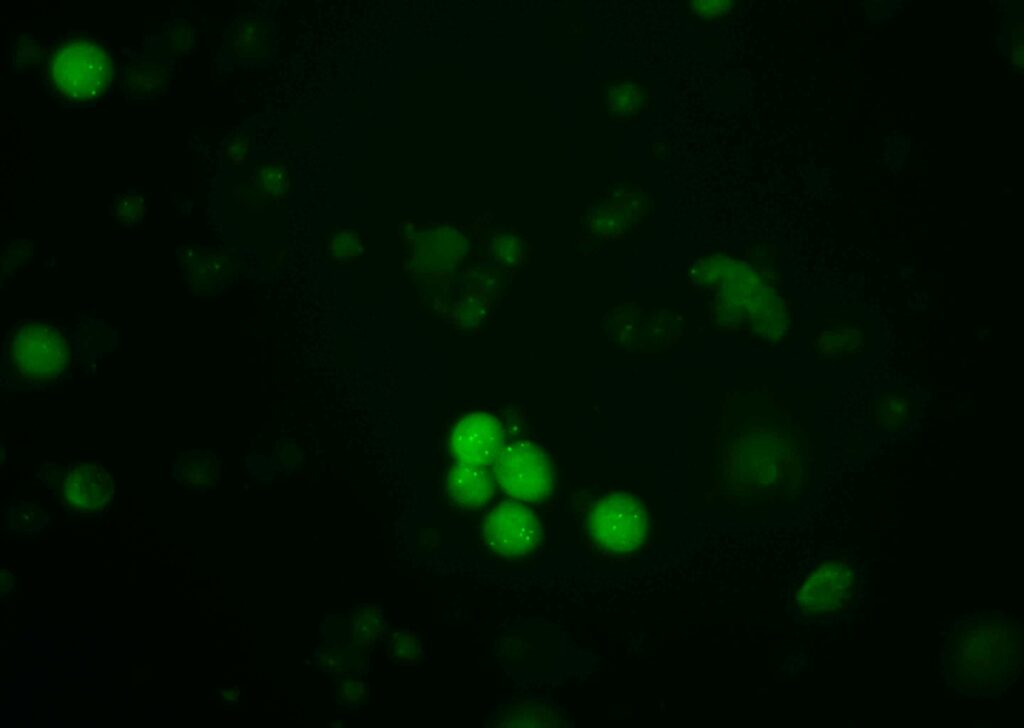

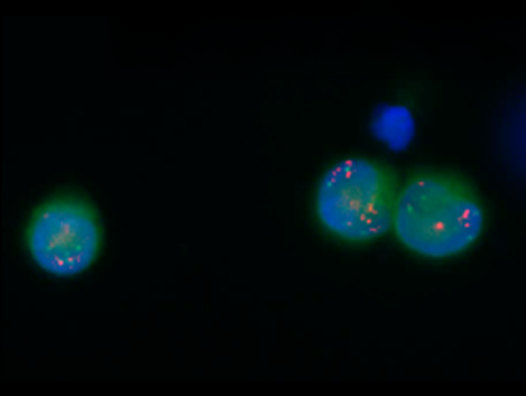
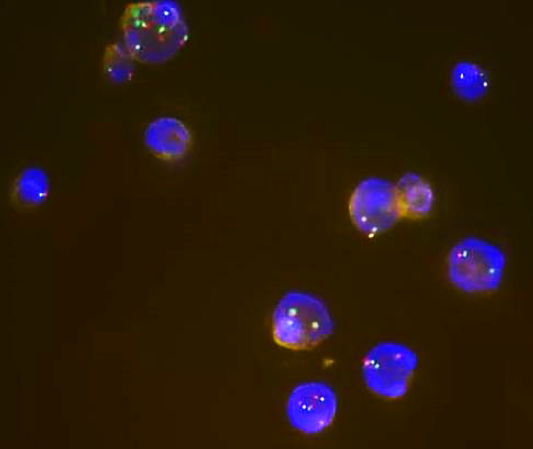
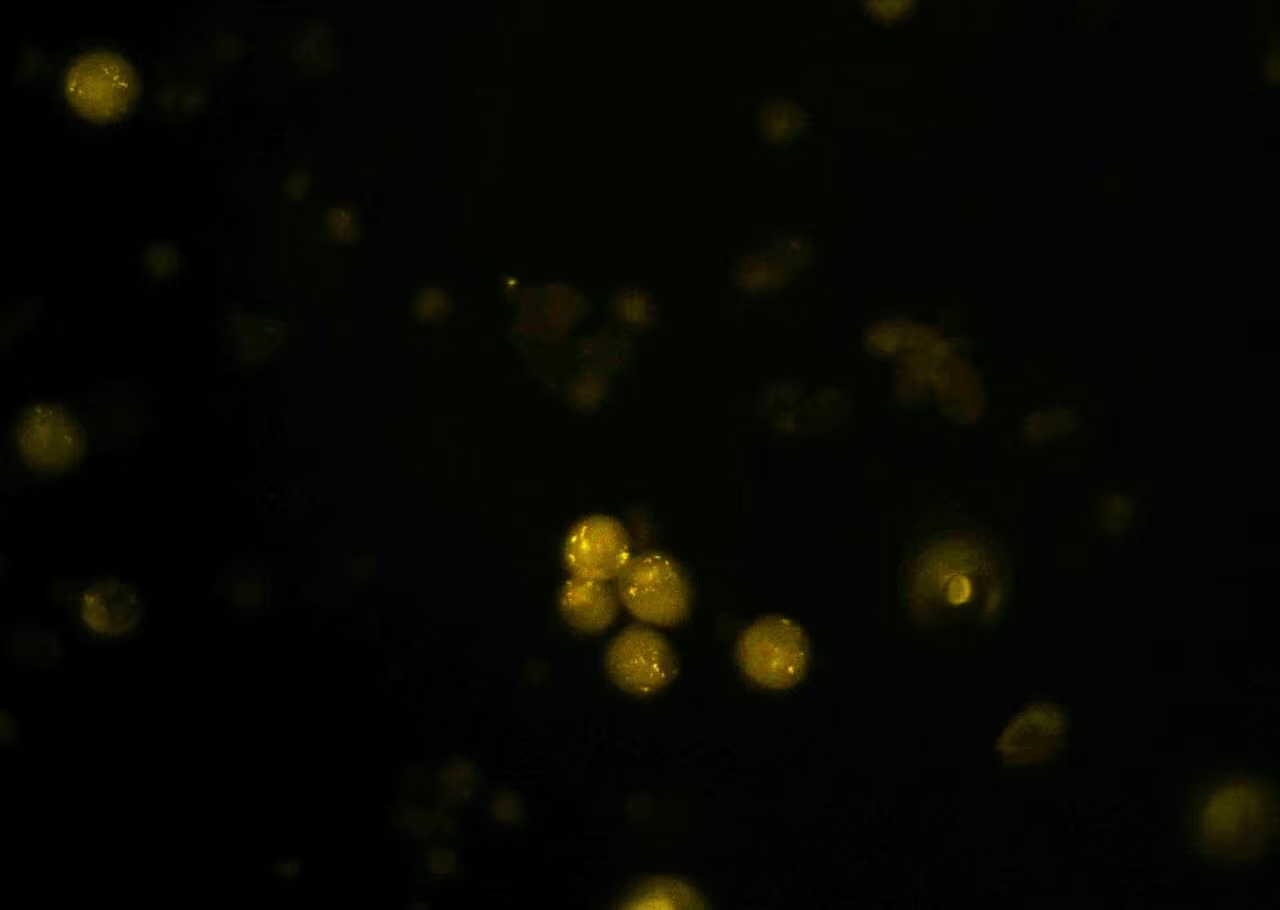
Fluorescence in situ hybridization (FISH) applied to circulating tumor cells (CTCs) allows the detection of genetic abnormalities present in these rare cells, thus providing an essential method for personalized treatment and early detection of metastases.

HER-2 FISH analysis performed on the isolation support with the SKBR3 cell line.
FISH analysis could identify specific therapeutic targets, such as HER2 in breast cancer, and provides crucial information on tumor biology, metastatic mechanisms and cancer progression during treatment.
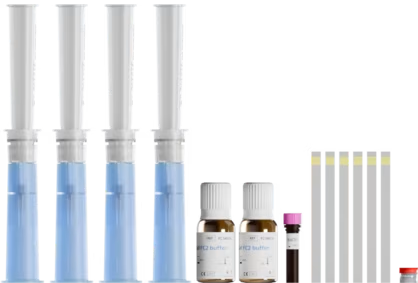
Blood sample
< 4 hours
Cells fixed and analyzed on the isolation support
Cytological
staining
Immunofluorescence
Immunocytochemistry
Fluorescence in situ hybridization

Blood sample
< 3 days
Cytological
staining
Immunofluorescence
Immunocytochemistry
Fluorescence in situ hybridization

Blood sample
< 3 days
ou
Cells fixed detached
from the isolation support for analysis in suspension or on slide
Cytological
staining
Immunofluorescence
Immunocytochemistry
Fluorescence in situ hybridization

Blood sample
< 4 hours
ou
Cells fixed detached
from the isolation support for analysis in suspension or on slide
Cytological
staining
Immunofluorescence
Immunocytochemistry
Fluorescence in situ hybridization

Blood sample
< 4 hours
Living cells detached
from the isolation support for suspension analysis
Cytological
staining
Immunofluorescence
Immunocytochemistry
Fluorescence in situ hybridization

Blood sample < 3 days
Fixed cells detached
from the isolation support for analysis on slide

Blood sample < 4 hours
Fixed cells detached
from the isolation support for analysis on slide
Fluorescence in situ hybridization (FISH) performed with the appropriate ScreenCell kits allows detection of genetic abnormalities at the DNA level.
The HER2/CEP17 probe shows hybridization on tumor cell lines such as Skbr3 (Score 3+), allowing comparison of target DNA amplification with a negative control such as MDA-231 (Score 0) in breast cancer.


Are you interested in establishing a fundamental or clinical research project focused on circulating tumor cells (CTCs) or liquid biopsy ?
Share your project details with us, and we will be delighted to assist you in bringing it to fruition.